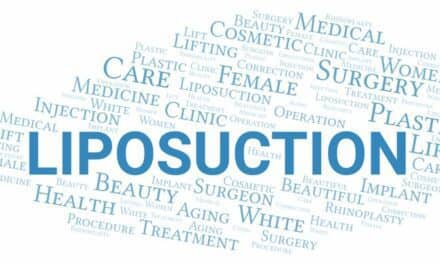By Denise Mann, PSP Editor-In-Chief
And then there were three …
For years, there has been a steady drumbeat heralding the arrival of “gummy bear” breast implants. I 
Before each big industry meeting, there was always some buzz that the gummies were “thisclose” to getting the coveted federal Food and Drug Administration (FDA) nod.
The media was all over it from day 1. We took the bait. Gummies were safer. They had all the positive traits associated with silicone gel—namely, the natural feel—but they were form-stable, meaning that the gel wouldn’t go anywhere in the event of a rupture. (Bear in mind, the FDA was still mulling the link between silicone gel and systemic diseases at this time, so this safety edge was considered the holy grail.)
At some point, the drumbeat simply stopped. Nobody talked about the gummy bear implants anymore. Not doctors, not clinical investigators, not manufacturers, not journalists, and not prospective patients.
At the time, the breast implant market was somewhat hostile. The FDA had just voted to maintain the ban on silicone gel-filled implants, leaving only saline-filled implants for those seeking cosmetic augmentation or reconstruction outside of clinical trials. The 14-year silicone moratorium was lifted in 2006, and then many surgeons had to learn how to integrate these devices into their practices. (Fourteen years is a long time. Many doctors weren’t even in medical school yet when the ban was enacted, so they had no experience with silicone-filled breast implants.)
Then in March 2012, without much hoopla or any warning, Sientra announced that its form-stable implants had been approved. Were these “gummies”? The answer depended on who you asked, as many in the business tried to distance themselves from the kitschy nickname.
Roughly a year later, Allergan’s 410 got the same nod, and in mid-June, so did Mentor’s gummy bear. This implant, formerly known as Mentor’s CPG, is now going by the name of MemoryShape. (The company’s round silicone-filled implants are called MemoryGel, so the midstream name change makes some sense.)
Now, there are three shaped, highly cohesive silicone gel-filled implants (read: gummies) for patients and breast surgeons to choose from—but does anyone care anymore?
Sientra had a significant head start, but anecdotally speaking, its product didn’t seem to gain much traction among patients in the US.
In general, patients still seem confused about the implants’ attributes. (All silicone is cohesive, so we are really just talking about degrees, which can be hard to grasp given the preapproval hype.) What’s more, silicone has been cleared of its link to systemic disease.
The gummies fell victim to hype. Clinical trialists inflated the potential benefits of these implants and helped to foster the perfect breast implant fantasy. (Yes, us journalists played a role, too). The FDA took its time reviewing all the safety data, which is a good thing considering some of the issues in Europe right now regarding the PIP breast implant scandal.
All we can say right now is that there is no perfect breast implant. For some women, highly cohesive may provide the result they are looking for, others do form with round, and others still get a great result with saline. The decision should be based on a frank discussion with the surgeon that takes aesthetic goals and expectations into account.
In the future, differences may emerge and the gummies may really be the next breast thing.
There haven’t been any head-to-head comparisons among these three implants, and TBD price points may play a role in which one (if any) garner a greater market share.
Unless and until that happens, it isn’t a case of three’s a crowd, but one of three’s company.





